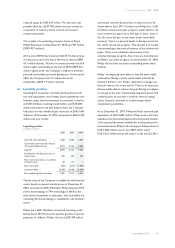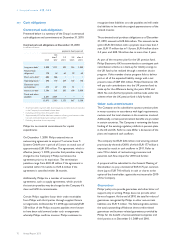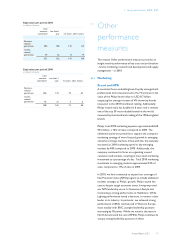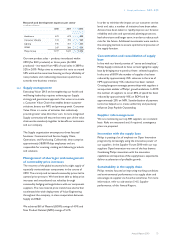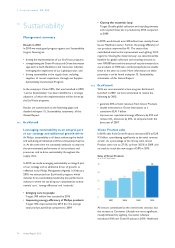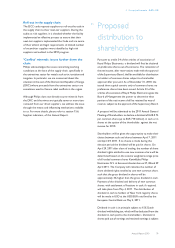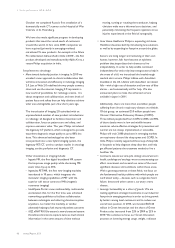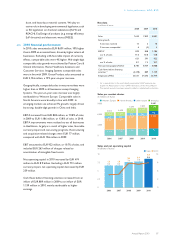Philips 2010 Annual Report Download - page 77
Download and view the complete annual report
Please find page 77 of the 2010 Philips annual report below. You can navigate through the pages in the report by either clicking on the pages listed below, or by using the keyword search tool below to find specific information within the annual report.5 Group performance 5.4.4 - 5.4.4
Annual Report 2010 77
Moreover, 24% of our top potentials and 30% of our high
potentials were female in 2010, an increase of 1% in both
categories compared to 2009. The percentage of top
potentials with BRIC nationality stood at 11%, with high
potentials at 15%.
Developing our people
Our new learning strategy focuses on building skills that
are strongly aligned with business needs. In 2010, we
streamlined our class-room offerings in close alignment
with businesses and functions to focus on their key
priorities. The second important driver of our learning
strategy is providing employees with free and unlimited
access to a wide range of online learning options to drive
their personal development and growth.
Participation in these priority programs increased
significantly, with over 20,000 employees participating in
programs in our Core Curriculum during 2010, compared
with 5,500 in 2009. Functional Core Curricula enrollment
was over 15,500 in 2010, an increase from 11,000 in 2009.
These Core Curricula have been developed for functions
such as Marketing, Sales, Customer Services, IT, HRM,
Supply Management and Finance. Additionally,
approximately 35,000 executives and sales and marketing
employees completed the anti-corruption training
program.
Our flagship leadership development programs for our
talent pool are run in collaboration with leading business
schools with a strong emphasis on blended learning. In
2010, our Inspire program for high potentials facilitated
the completion of 20 project assignments. Top potentials
in the Octagon program completed 5 business projects.
These business projects are sponsored by senior business
leaders and are designed to contribute to the realization
of Philips’ strategic goals.
Participation in our curriculum of internal and external
programs for Executives remained stable.
In line with our ‘Grow with Philips’ program, 65% of newly
appointed executives were promotions and 35% external
hires.
General Business Principles
The Philips General Business Principles (GBP) govern
Philips’ business decisions and actions throughout the
world, applying equally to corporate actions and the
behavior of individual employees. They incorporate the
fundamental principles within Philips for doing business.
The GBP are available in most of the local languages and
are an integral part of the labor contracts in virtually all
countries where Philips has business activities.
Responsibility for compliance with the principles rests
primarily with the management of each business. Every
country organization and each main production site has a
compliance officer. Confirmation of compliance with the
GBP is an integral part of the annual Statement on
Business Controls that has to be issued by the
management of each business unit. The GBP incorporate a
whistleblower policy, standardized complaint reporting
and a formal escalation procedure.
The global implementation of the One Philips Ethics
hotline seeks to ensure that alleged violations are
registered and dealt with consistently within one
company-wide system.
To drive the practical deployment of the GBP, a set of
directives has been published, which are applicable to all
employees. There are also separate directives which apply
to specific categories of employees, e.g. the Supply
Management Code of Ethics and Financial Code of Ethics.
Details can be found at www.philips.com/gbp.
Ongoing training
The global roll-out of the updated version of the
mandatory web-based GBP training, which is designed to
reinforce awareness of the need for compliance with the
GBP, was completed in 23 languages.
More information on the Philips GBP can be found
inchapter 7, Risk management, of this Annual Report.
Results of the monitoring in place are provided in the
Sustainability statements section.
Health and safety
In 2010 we recorded 482 Lost Workday Injuries cases,
occupational injury cases where the injured person is
unable to work the day after the injury. This is a 11%
increase compared with 2009. The rate of Lost Workday
Injuries also increased to 0.50 per 100 FTEs, compared
with 0.44 in 2009.
The increase in Lost Workday Injuries was particularly
caused by new acquisitions which are included in our
reporting for the first time in 2010. We started a number
of health and safety initiatives in 2010 to drive down injury
levels.




